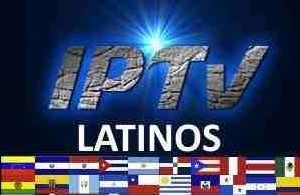Latin America Offers More IPTV Latino Options Than Other Places
Now that TV viewers in the USA have access to IPTV Latino, or Internet Protocol Television, it’s about time they learned some basics using IPTV Latino. Latin America is rapidly growing as a major target market for I PTV providers, which means better quality service and affordable prices for subscribers. With many IPTV services including free-to-air channels, the quality of this type of service has been a main priority. Many IPTV providers in Latin America are providing exclusive packages to attract subscribers, but there’s no better way to take advantage of IPTV than through I PTV Latino. It’s an easy way to see the most popular channels on the widest range of quality HD TV screens in your home.
Equipment For IPTV
Unlike cable subscriptions that require a set delivery time and geographic location, I PTV Latino delivers high-definition TV programming direct to your TV at any time, day or night. You don’t need cable equipment or satellite to get started with I PTV Latin. Instead, all you need is a computer hooked up to the Internet using a high-speed modem, high-speed cable connection or Wi-Fi. You can even watch I PTV Latin on a TV in the same room if you have more than one TV set hooked up.
Growth of IPTV Latino
Even though IPTV is relatively new in the US, it has already established itself as an industry leader. Cable providers haven’t been able to keep up with IPTV Latin’s aggressive growth, so they’re scrambling to create services to compete. In the meantime, cable companies must make deals with I PTV Latin and other like-minded competitors to avoid being left out in this new revolution in home entertainment technology. With so many options for customers in Latin America and the US, there’s never been a better time to invest in high-quality IPTV service. This year will be the first year that more IPTV packages will be made available across different countries.
Enjoy United state People
For people living in the United States, IPTV can mean a number of things. While some see it as a great way to enjoy the benefits of cable service without the extra price and space hog, others swear by it like a religion. Like all new technology, IPTV has its pros and cons. However, those who’ve used it say that there are few disadvantages compared to the huge benefits, including better customer service and access to many more channels than your standard cable package.
Best Quality IPTV Latino
In terms of quality, it’s hard to find a better way to watch TV than with IPTV. High-definition (HD), or high-density television, is widely available through all major cable providers. In fact, HD programming is usually three times as fast as regular TV, which can be very important for consumers. And because there’s no signal interference from other TV channels, IPTV is also ideal for people who live in apartments, which are far from any cable company’s towers. That means no more waiting for the satellite to send the signal for HD to your receiver, which can cause a delay. With cable, you’ll either have to settle for an expensive high definition package or invest in a high-speed connection to get HD without a delay.
Low Pricing
Another advantage is price. The average monthly subscription fees in the U.S. for IPTV services are $15 per month, or about half the cost of basic cable service. That’s less than one-fifth the price of a good DVD player! Latin American and Caribbean area IPTV service providers often offer discounts for frequent customers, so signing up for multiple services may save you some money over time.
Multiple Channels
But what’s the best way to view IPTV? Satellite is still the best way to see all of the major international TV stations, as well as a lot of other channels from specialty IPTV service providers. Some IPTV services even offer free DVR equipment that lets you record TV shows and movies to watch later, if you want to. IPTV receivers come in a variety of sizes and price ranges, but they’re usually affordable for most users.
Conclusion IPTV Latino
One final advantage to using IPTV in the Latin American region is the lack of common cable systems and signals. In the past, cable companies required viewers to live in areas where they had direct broadcast lines, which meant viewers had to cross state lines or other obstacles that restricted them from watching IPTV in their home city. Now that so many Latin American countries are becoming members of the digital single market, satellite TV providers can be found in many rural and remote areas. Because there’s less competition, the prices for IPTV services have become quite low in the Latin American market. Cable companies can still have more control over pricing, though.


Recent Comments